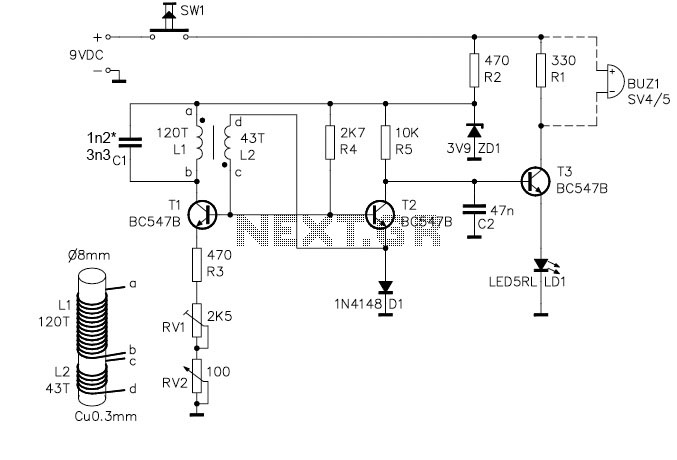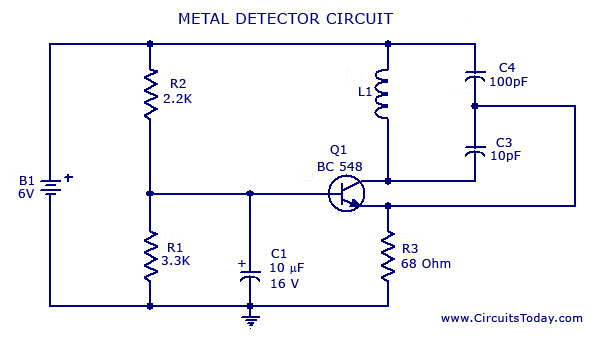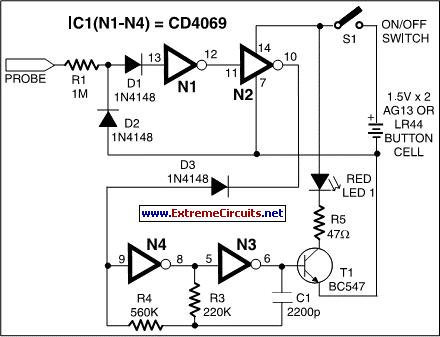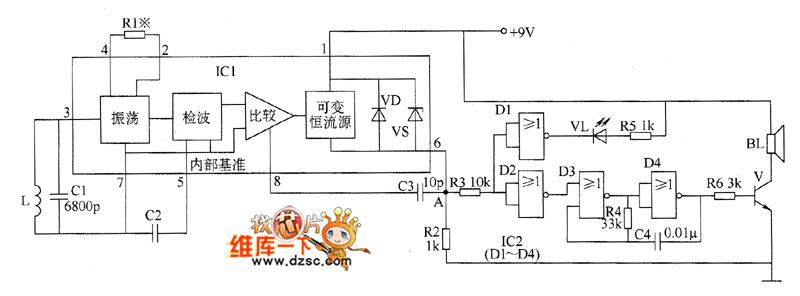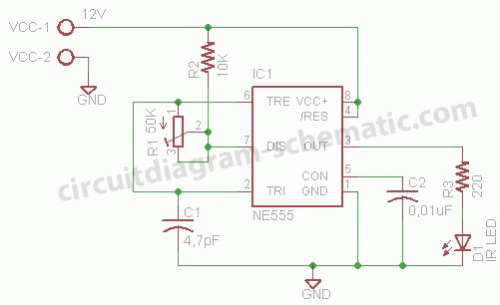
Edge detector
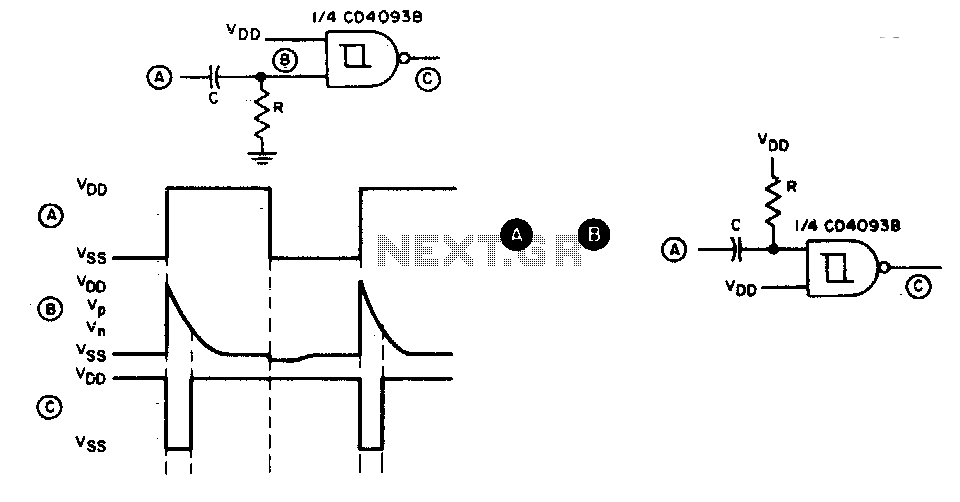
This circuit generates a brief negative-going output pulse in response to each positive-going edge at the input. The input signal is coupled to the circuit through a capacitor (C), and the duration of the output pulse is determined by the resistor (R) and capacitor (C) values. If a negative-going edge detector is needed, the alternative circuit in section B should be utilized.
This circuit functions as a pulse generator that reacts specifically to the rising edges of an input waveform. The input signal is first coupled into the circuit via a capacitor, which serves to block any direct current (DC) components, allowing only the alternating current (AC) variations of the signal to pass through. Upon the occurrence of a positive-going edge, the capacitor momentarily charges, causing a rapid change in voltage across the output.
The output pulse's duration is critically dependent on the values of the resistor (R) and capacitor (C) in the circuit. The time constant, defined as τ = R × C, dictates how quickly the capacitor discharges after the initial charging. A larger resistor or capacitor will result in a longer pulse duration, while smaller values will produce shorter pulses. This behavior can be effectively modeled using the exponential discharge equation for the capacitor, which describes the voltage across the capacitor as it returns to its baseline value after the pulse.
For applications requiring detection of negative-going edges, an alternative circuit configuration as referenced in section B should be employed. This circuit would typically involve a different arrangement of components, such as using an inverting amplifier or a different capacitor placement, to ensure that the output pulse is generated in response to falling edges of the input signal. Such configurations can be tailored to meet specific timing and signal processing requirements in various electronic applications.This circuit provides a short negative-going output pulse for every positive-going edge at the input. The input waveform is coupled to the input by capacitor C; the pulse length depends, as before, on R and C
If a negative going edge detector is required, the circuit in B should be used.
This circuit functions as a pulse generator that reacts specifically to the rising edges of an input waveform. The input signal is first coupled into the circuit via a capacitor, which serves to block any direct current (DC) components, allowing only the alternating current (AC) variations of the signal to pass through. Upon the occurrence of a positive-going edge, the capacitor momentarily charges, causing a rapid change in voltage across the output.
The output pulse's duration is critically dependent on the values of the resistor (R) and capacitor (C) in the circuit. The time constant, defined as τ = R × C, dictates how quickly the capacitor discharges after the initial charging. A larger resistor or capacitor will result in a longer pulse duration, while smaller values will produce shorter pulses. This behavior can be effectively modeled using the exponential discharge equation for the capacitor, which describes the voltage across the capacitor as it returns to its baseline value after the pulse.
For applications requiring detection of negative-going edges, an alternative circuit configuration as referenced in section B should be employed. This circuit would typically involve a different arrangement of components, such as using an inverting amplifier or a different capacitor placement, to ensure that the output pulse is generated in response to falling edges of the input signal. Such configurations can be tailored to meet specific timing and signal processing requirements in various electronic applications.This circuit provides a short negative-going output pulse for every positive-going edge at the input. The input waveform is coupled to the input by capacitor C; the pulse length depends, as before, on R and C
If a negative going edge detector is required, the circuit in B should be used.
